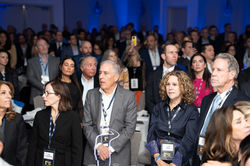City Of Hollywood Launches Turtle-Friendly Lighting Recognition Program

March 2, 2023
This week marks the beginning of the 2023 Sea Turtle Nesting Season, which takes place every year from March 1st through October 31st. During this time, the City Of Hollywood’s “Turtle Friendly Lighting Ordinance” is in effect, when the City’s Hatchlings are attracted to light. On undeveloped beaches, the ocean horizon is lighter than the land so new hatchlings head toward the water. In an urban beach environment, artificial light from buildings can disorient hatchlings and attract them away from the ocean. Turtle friendly lighting can minimize disorientation and make Hollywood Beach more hospitable to these endangered species.
The Broward County Sea Turtle Conservation Program (BCSTCP) documented 3,650 nests on the County's 24-mile coastline (including the Dr. Von D. Mizell-Eula Johnson State Park) in 2022. That’s a record for our area, and Hollywood’s sandy beach plays an important role in that success. Our beach is the desired nesting habitat for three species of endangered sea turtles: leatherbacks, loggerheads and greens. It is vital that everyone does their part to ensure future successful nesting seasons on Hollywood Beach.
Sea Turtle Friendly Lighting
Lighting near the beach should be "sea turtle-friendly" and follow these three criteria established by the Florida Fish and Wildlife Conservation Commission (FWC): Keep it low: Fixtures should be mounted as low as possible to achieve their purpose and their bulbs should produce the lowest lumens (light output) necessary for the task. In addition to low lumens, keep the fixture shielded, the bulb, lamp or glowing lens should be shielded from the beach and the interior lights should not be visible from the beach. If you live near the beach, close your curtains, shades and blinds after sunset.
One item you may not be aware of is, wavelength, no we aren't talking about the length of the ocean waves here. They are talking about the output, the fixtures/bulbs must produce long wavelength light (560 nm or longer) without filters, gels or lenses. Amber and red LEDs are good examples of these types of light.
Also keep in mind that even lights from cell phones can also disturb nesting and hatching sea turtles. If you visit the beach at night during nesting season, keep your cell phone safely stowed in your pocket or bag.
Turtle Friendly Lighting Recognition Pilot Program
The City Of Hollywood has launched a Turtle Friendly Lighting Recognition Pilot Program. The goal of the program is to increase awareness and compliance with the City’s turtle friendly lighting ordinance by way of recognition of those property owners who are certified compliant.
Hollywood’s turtle friendly lighting ordinance (§108, O-2011-07) requires that exterior lights be mounted as low in elevation as possible, shielded so that the light source is not visible from the beach, directed down and away from the beach and have a low wattage amber or red bulb. To reduce or eliminate the visibility of interior light from the beach, tinted glass or film must be installed on north, east and south facing doors and windows on new developments. Existing buildings can install window and door tint, move light fixtures away from windows, close the blinds and curtains, and turn off all unnecessary lights.
To receive recognition, a property must fully comply with the City’s turtle friendly lighting ordinance (§108, O-2011-07). The certification process can be found at: www.HollywoodFL.org/TurtleLighting
Apply today to be recognized by clicking the online application at: www.HollywoodFL.org/TurtleLighting











































